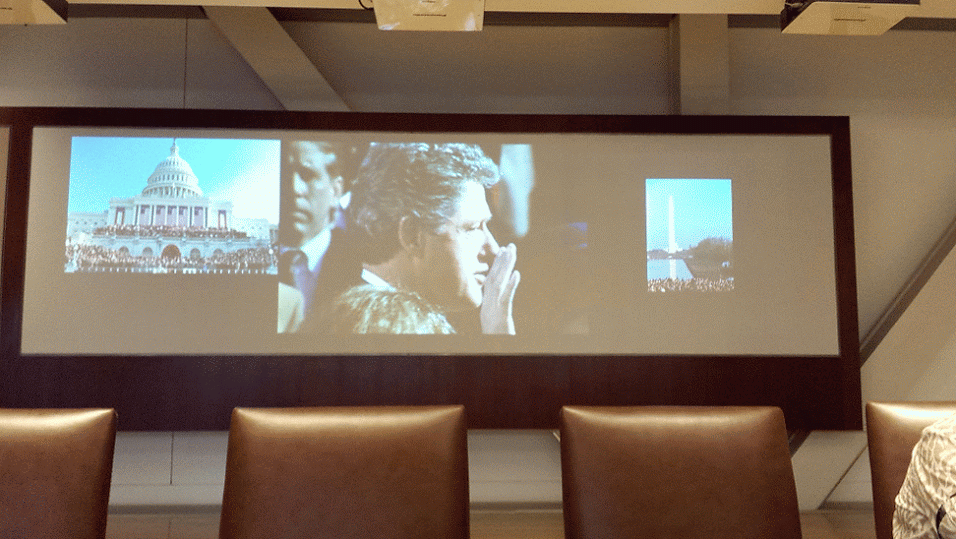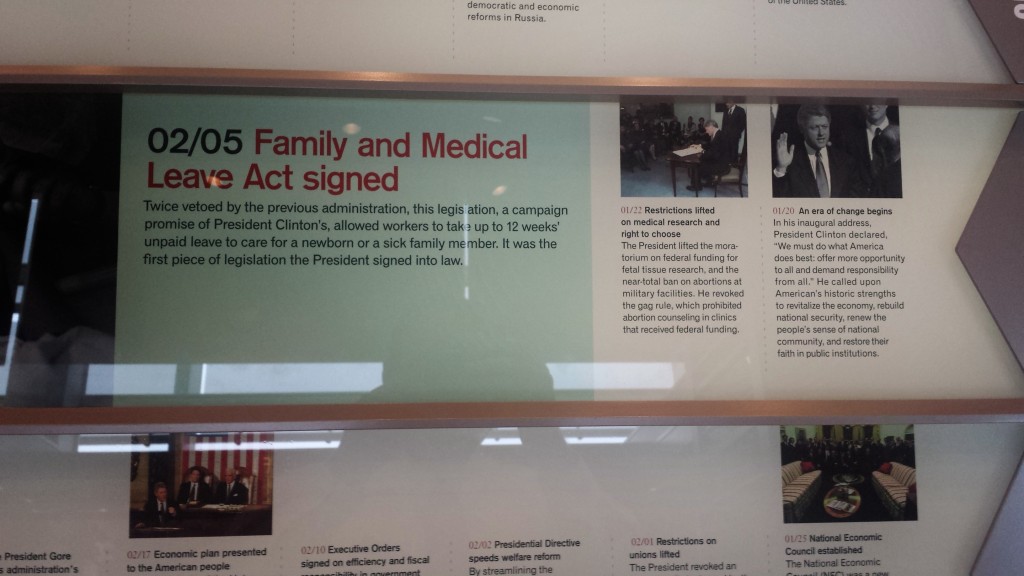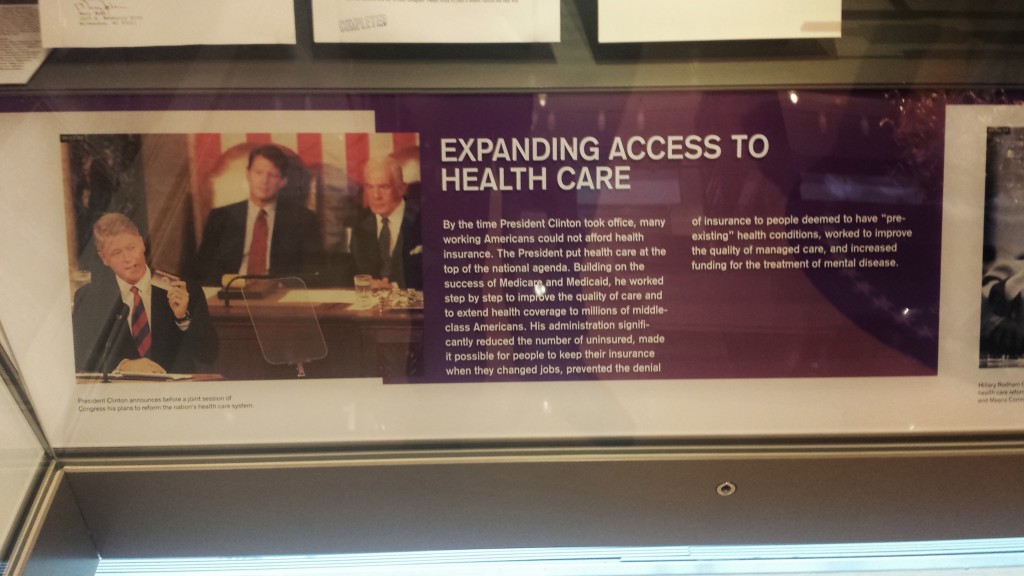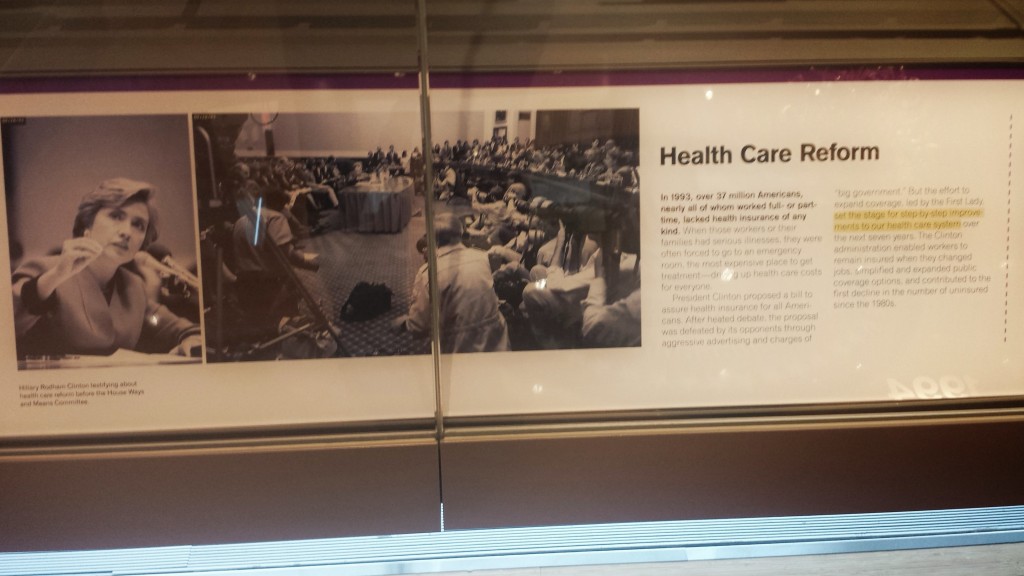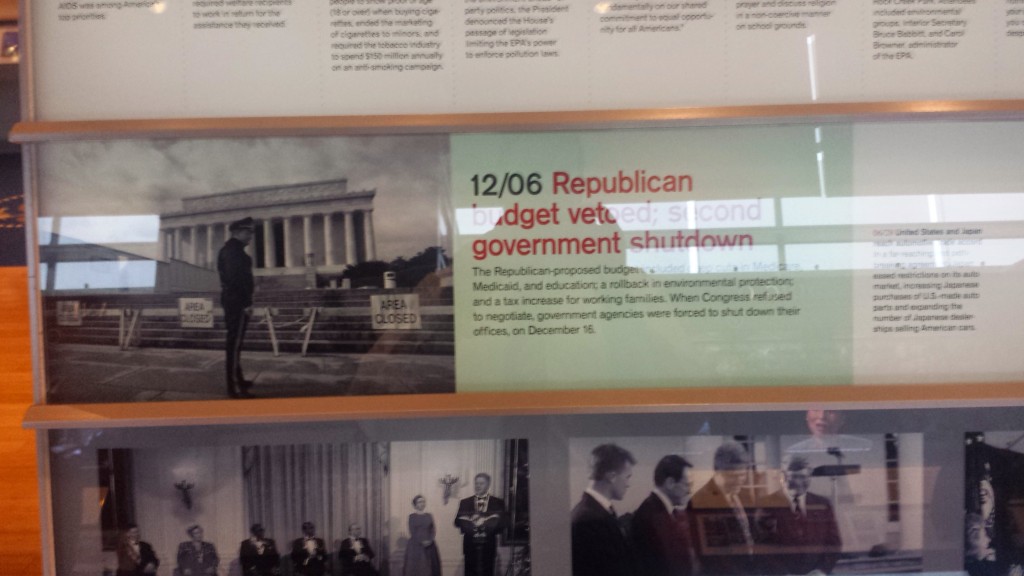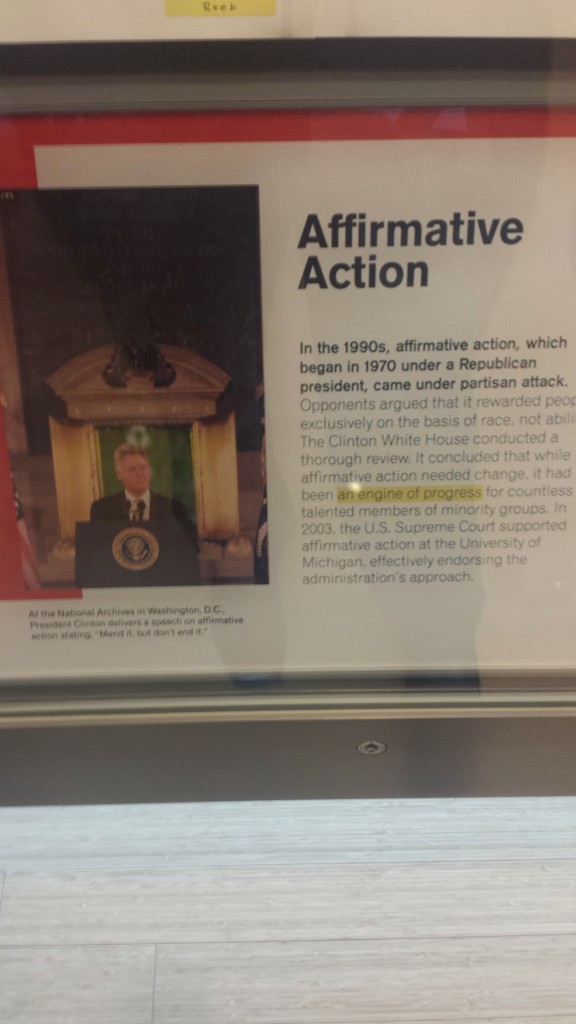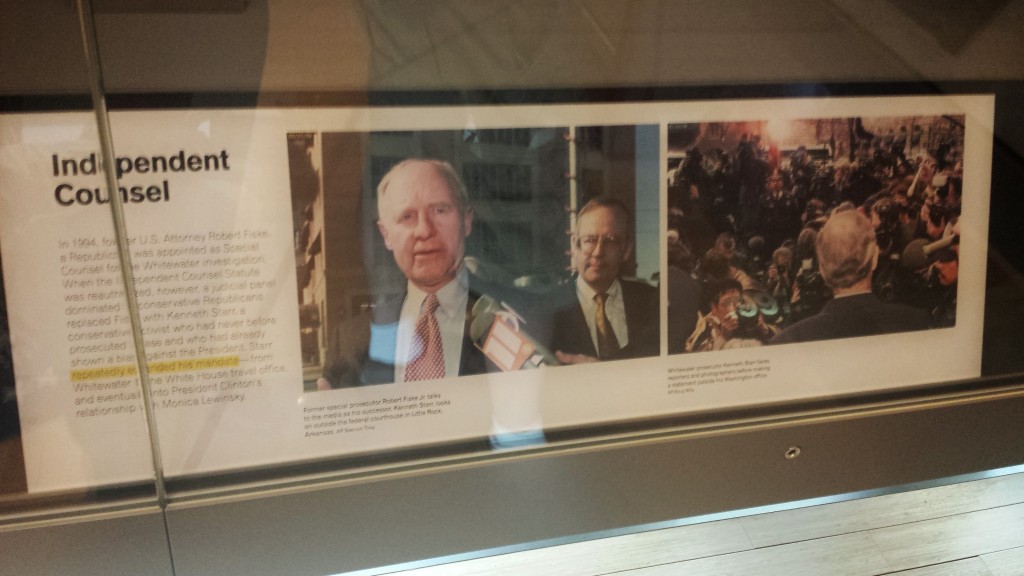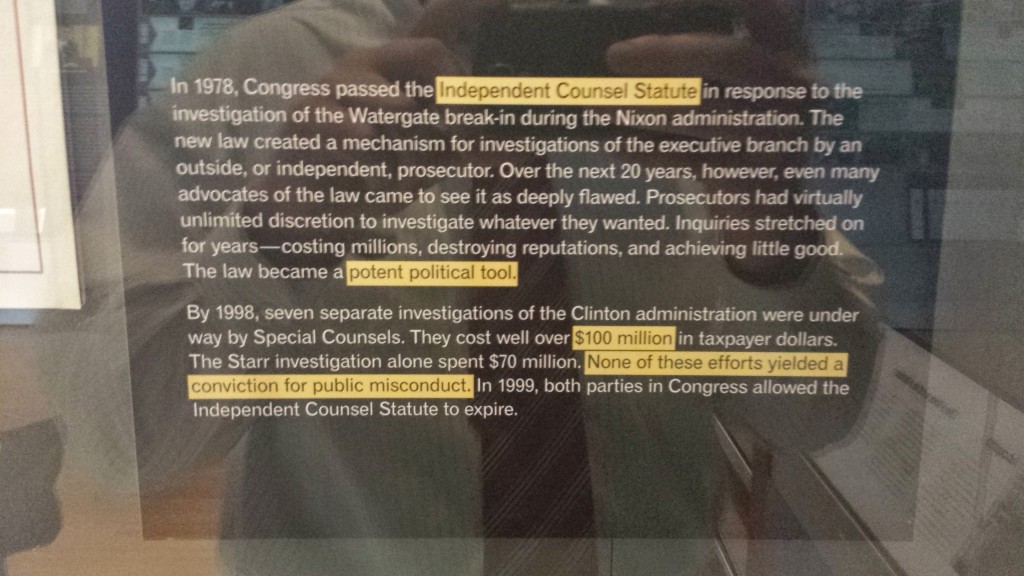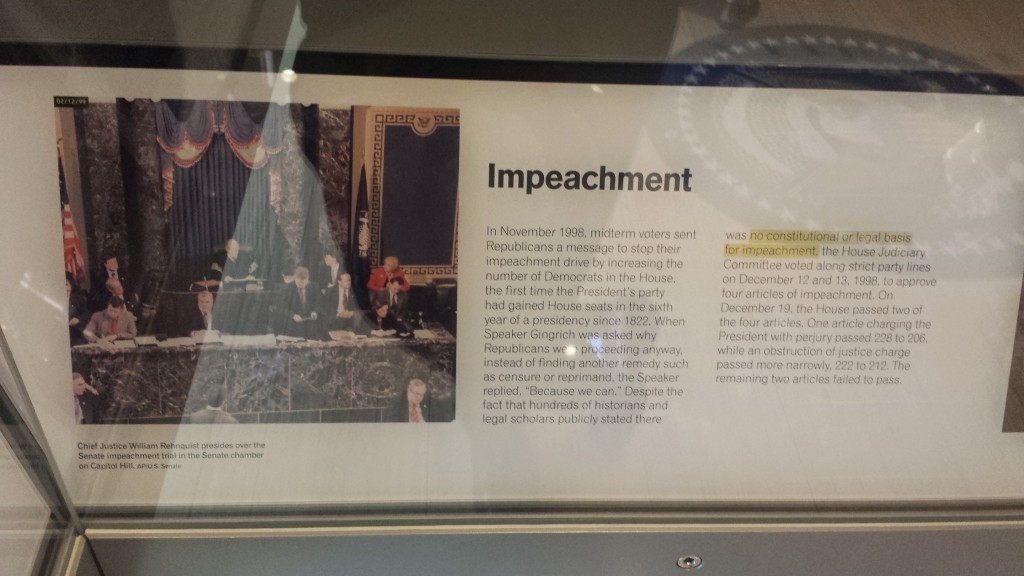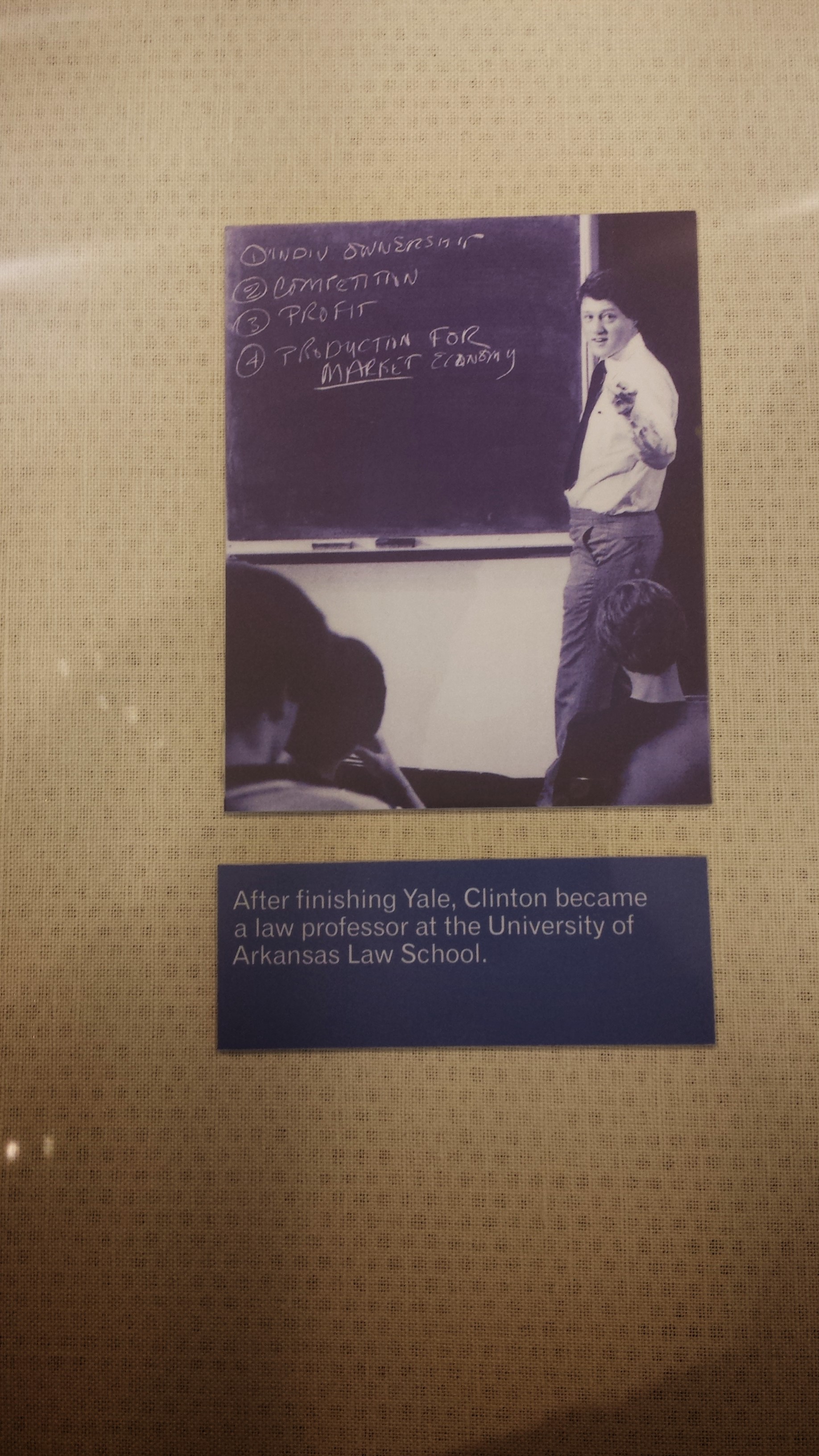I have now visited five Presidential Libraries–Johnson, Ford, Carter, Bush 41, and Clinton (42?). The first four I visited followed a familiar pattern. The exhibits begin with the President’s childhood, his growth, how he met his wife, how he entered government, and how he rose through the ranks. Halfway through you get to the Presidential election. Then you have a number of exhibits about the Presidents 1, or 2 terms. At the end, there is a focus on what the President did after he left the White House.
But the Clinton Library was very, very different. The museum begins with his inauguration in 1993. There was only a brief discussion of his 1992 campaign. Then the museum goes on to break down each of the 8 years of his presidency. But lacking was any meaningful exploration of Bill Clinton as a person. On the third floor, after you see everything else, you find 3 small cases with some relics from Bill Clinton’s childhood, including his Boy Scout Card and some childhood photos. There is also a small case about Hillary Rodham Clinton’s childhood, leading up to Yale. That’s it. There was virtually nothing about Chelsea Clinton growing up in the White House other than a few scattered photos. I found the decision to avoid talking about the President’s childhood–which must have been deliberate–fascinating. I spoke with a Professor at the University of Arkansas at Little Rock, and he agreed that it was a deliberate move.
The other interesting element of the museum was how they covered the impeachment and the Lewinsky affair. As you may expect, the entire impeachment was spun as a political vendetta by Newt and the right wing conspiracy. Entirely lacking was *any* discussion of why they sought to impeach him. Monica’s name was mentioned twice, and it referenced a “relationship” with the President. That’s it. No details about sex. I understand this is the President’s museum, but it is still operated by the National Archives and I would hope they would hold some slightly higher standards.
Beyond that, the museum was fairly bland. Nothing too interesting on the legal front. There was nothing about Justices Ginsburg or Breyer. Though we did see Chief Justice Rehnquist (sans stripes) swear in WJC.
There were several exhibits about the Brady Bill.
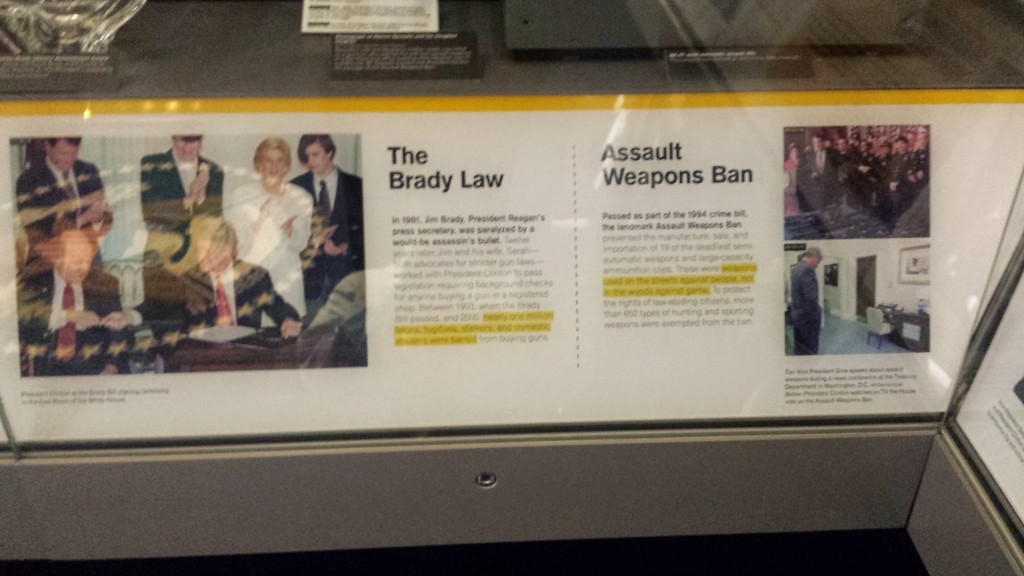
My favorite part was an AK-47 inside a cage. So poignant.
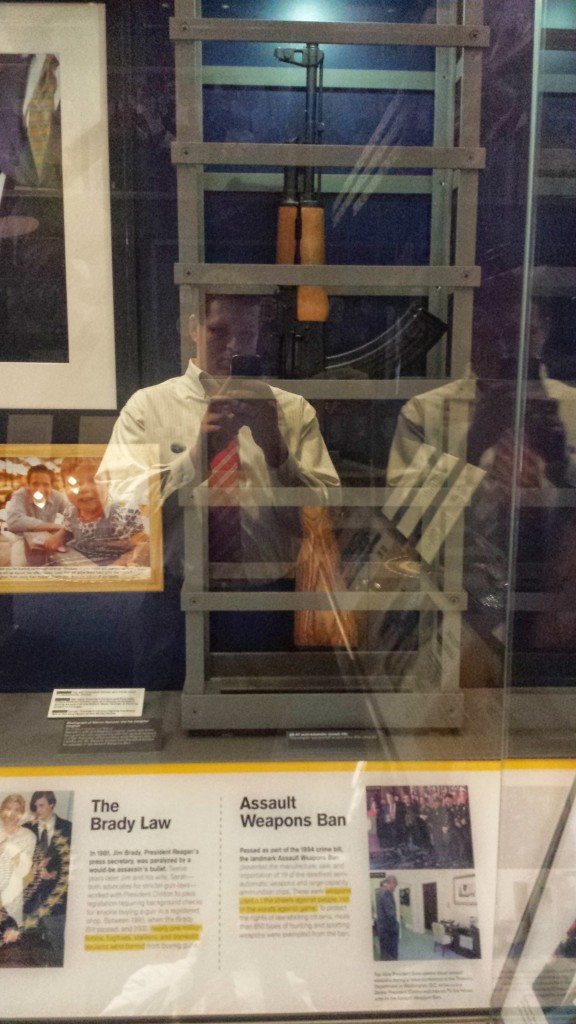
And FMLA:
And the failed Health Security Act:
Although it really downplayed the “failed” part, especially involving First Lady Hillary Clinton.
President Clinton proposed a bill to assure health insurance for all Americans. After heated debate, the proposal was defeated by its opponents through aggressive advertising and charges of “big government.”
You don’t say!
But they did have the original “Health Security” card the President used in his State of the Union address.
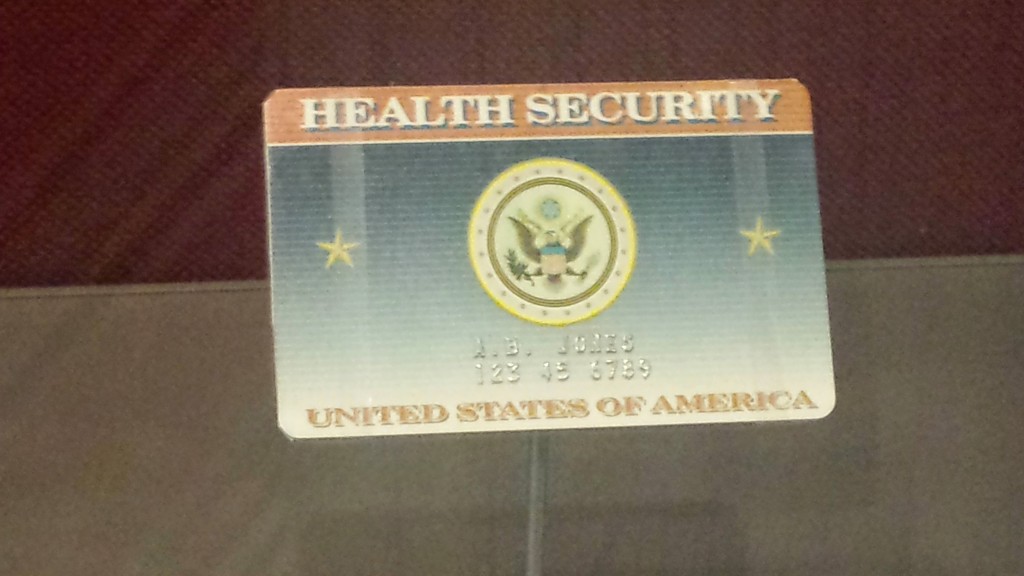
From this picture, I see that barricades were placed in front of open-air monuments during the last government shutdown as well.
Somehow, the museum tied together President Clinton’s affirmative action program and Grutter v. Bollinger. Not quite sure how that fits.
Also lacking from the discussion of “The Gay Community” was the Defense of Marriage Act. The exhibit downplays Don’t Ask, Don’t Tell, which apparently didn’t work as the President designed.
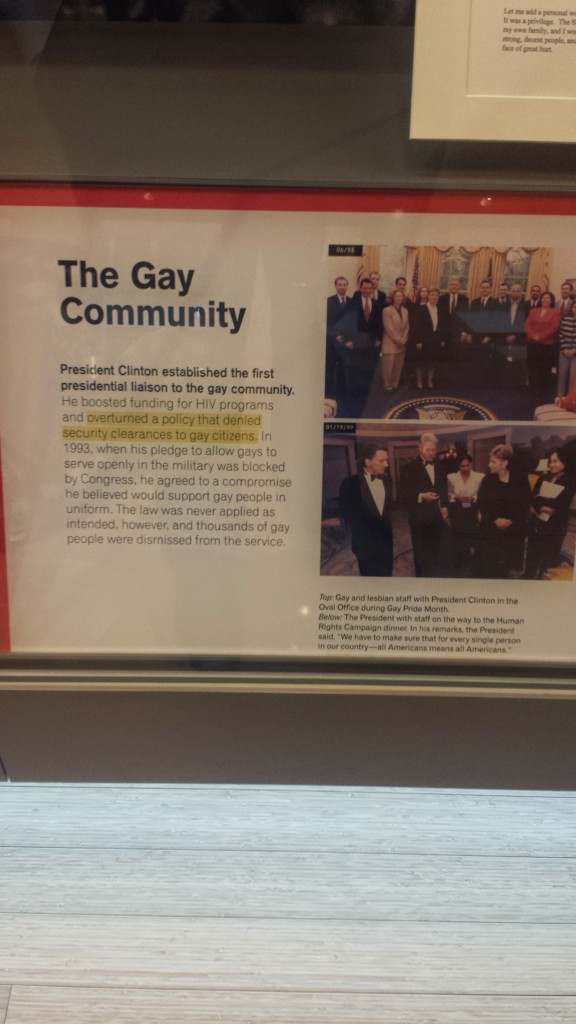
The exhibit on impeachment began with jeremiad against conservatives, blaming talk radio and the internet for creating a “combustible climate.”
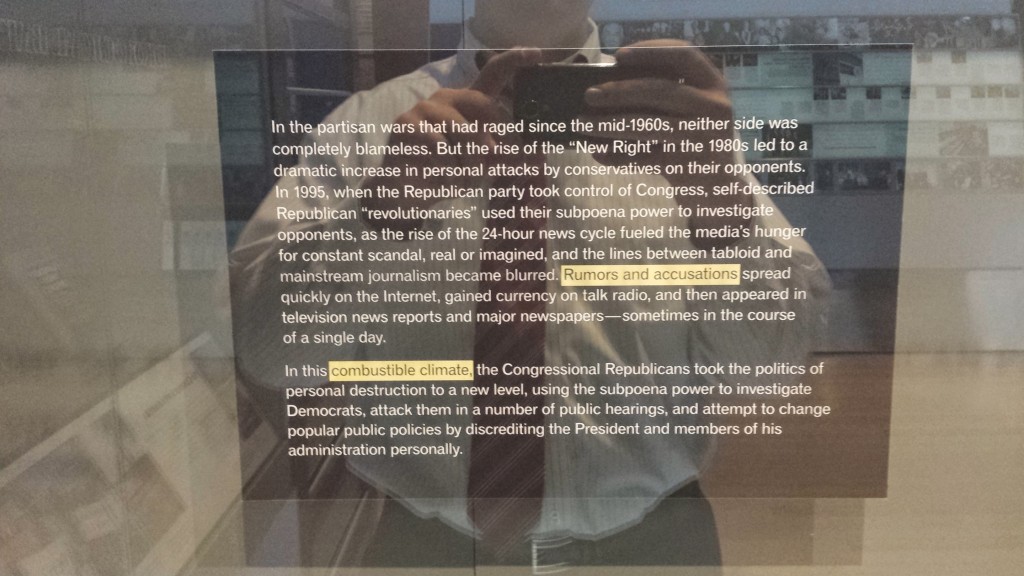
And, it turns out, there was absolutely nothing to Whitewater!
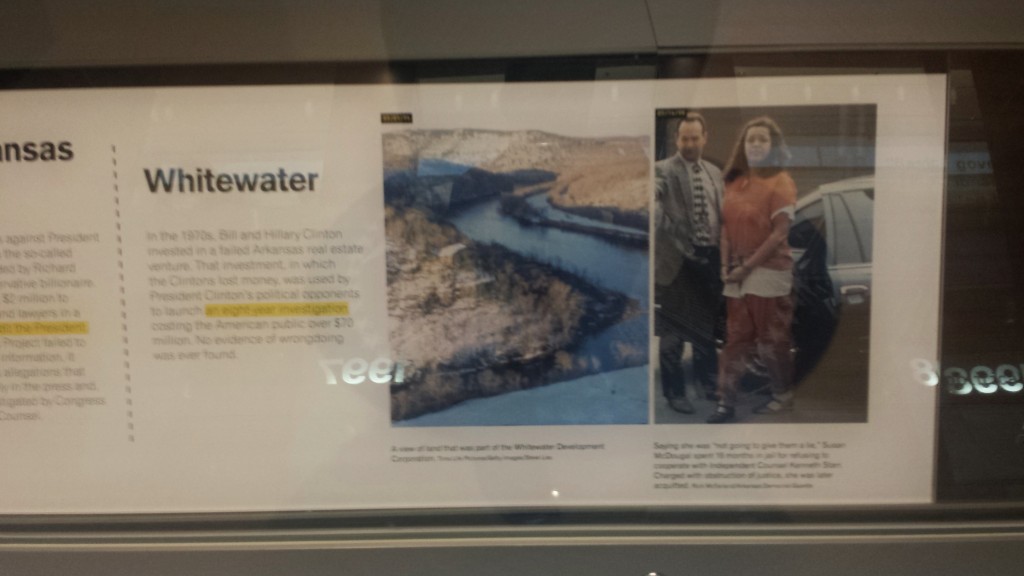 Next we get to the evil, evil Ken Starr.
Next we get to the evil, evil Ken Starr.
When the Independent Counsel State was reauthorized, however, a judicial panel dominated with conservative Republicans replaced Fiske with Kenneth Starr, a conservative activist who had never before prosecuted a case and who had already shown a bias against the President. Starr repeatedly expanded his mandate–from Whitewater to the White House Travel Office and eventually into President Clinton’s relationship with Monica Lewinsky.
This is the statute reauthorizing the independent counsel.
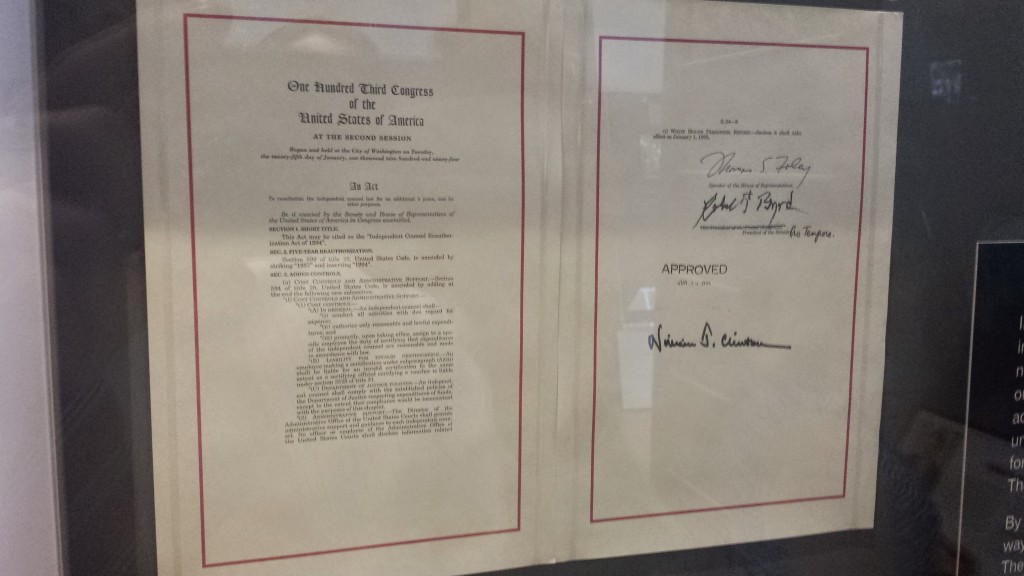
The Independent Counsel Statute was a “potent political tool” and “None of these efforts yielded a conviction for public misconduct.” Just the impeachment of the President.
And about that impeachment, which the exhibit insists there was “no constitutional or legal basis” for.
And then, don’t you know, he is acquitted!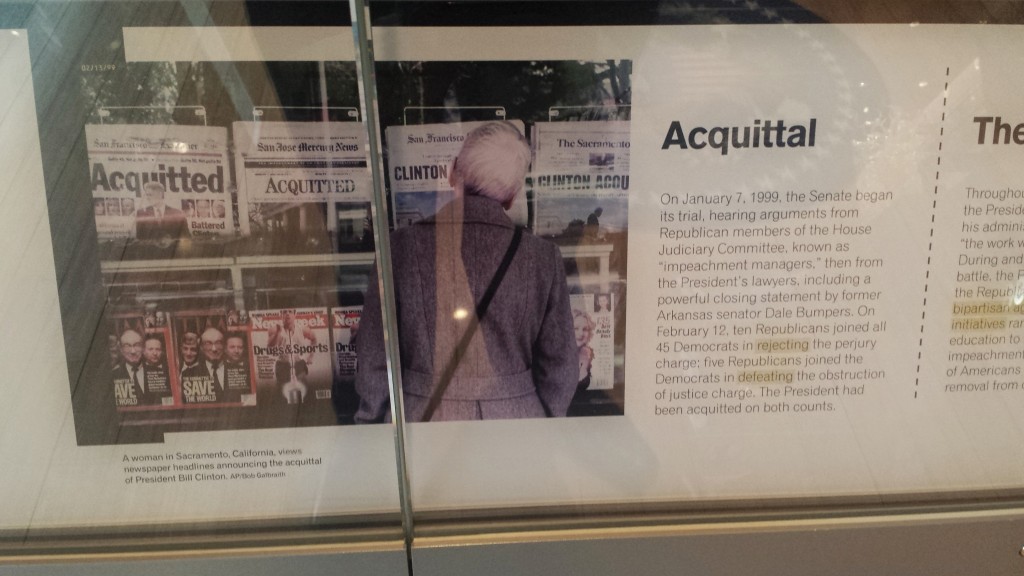
This is the closest we get to any details on what happened with Monica.Again, it only says his “relationship” with Ms. Lewinsky.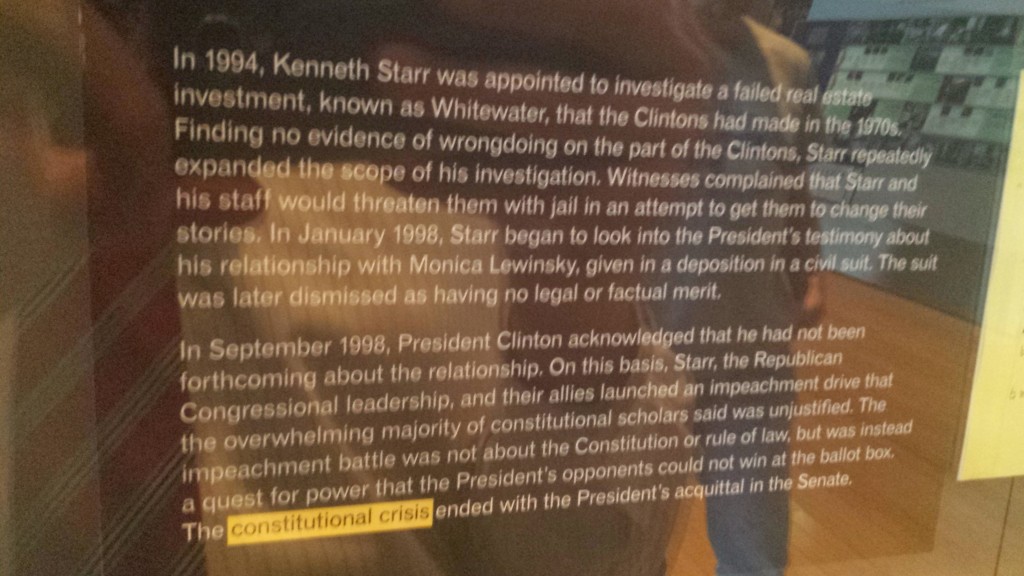
Finally on the 3d floor, we got to personal exhibits.
Here is Hillary Rodham at Yale Law School Moot Court.
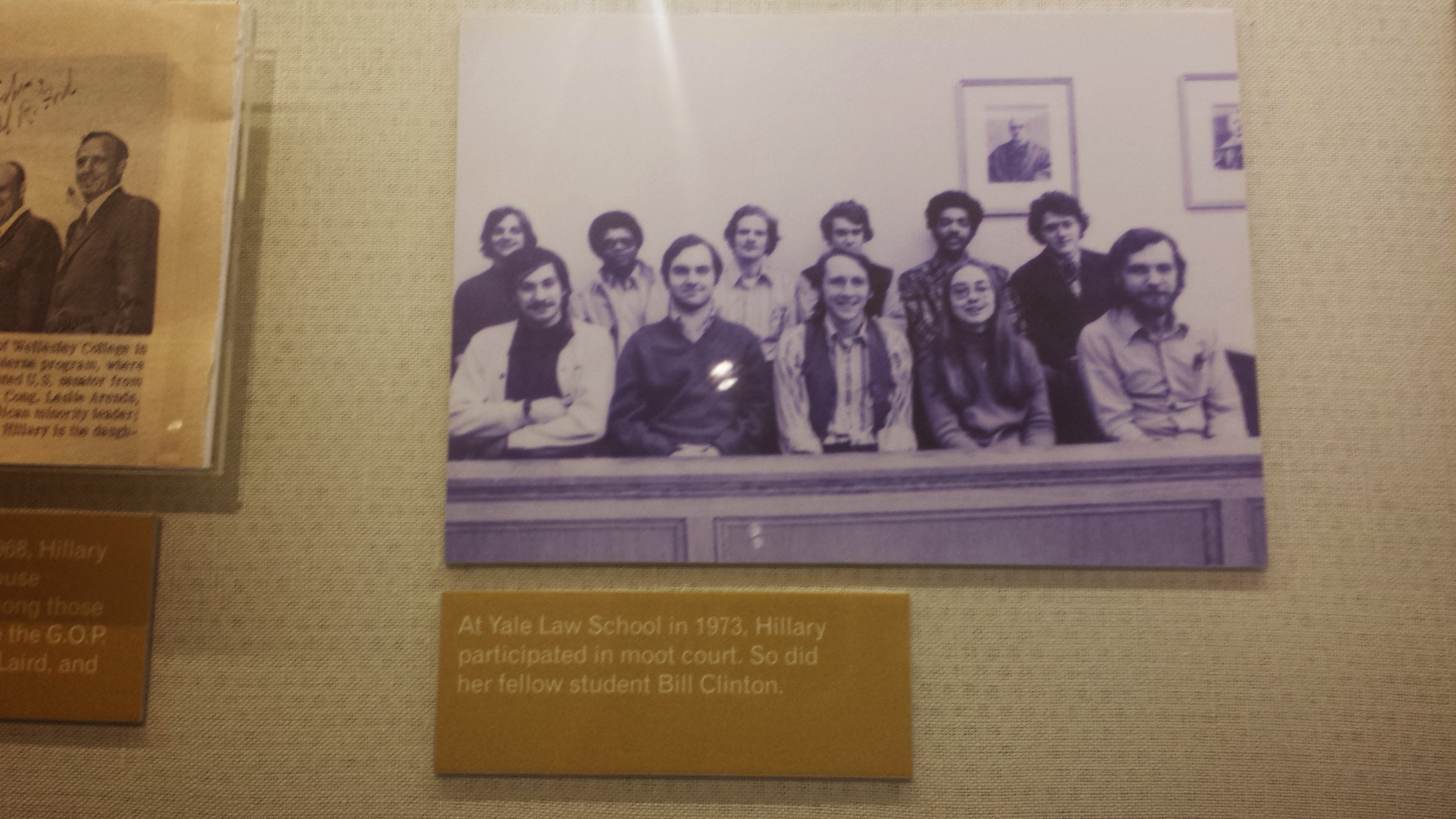
And Hillary’s report card for 2nd Grade. The teacher’s comments read:
Some help needed. 1. Reading too rapidly orally. 2. Keeping belongings neat.
This is Bill Clinton’s notice of appointment as an Assistant Professor of Law at the University of Arkansas, at an annual salary of $14,706.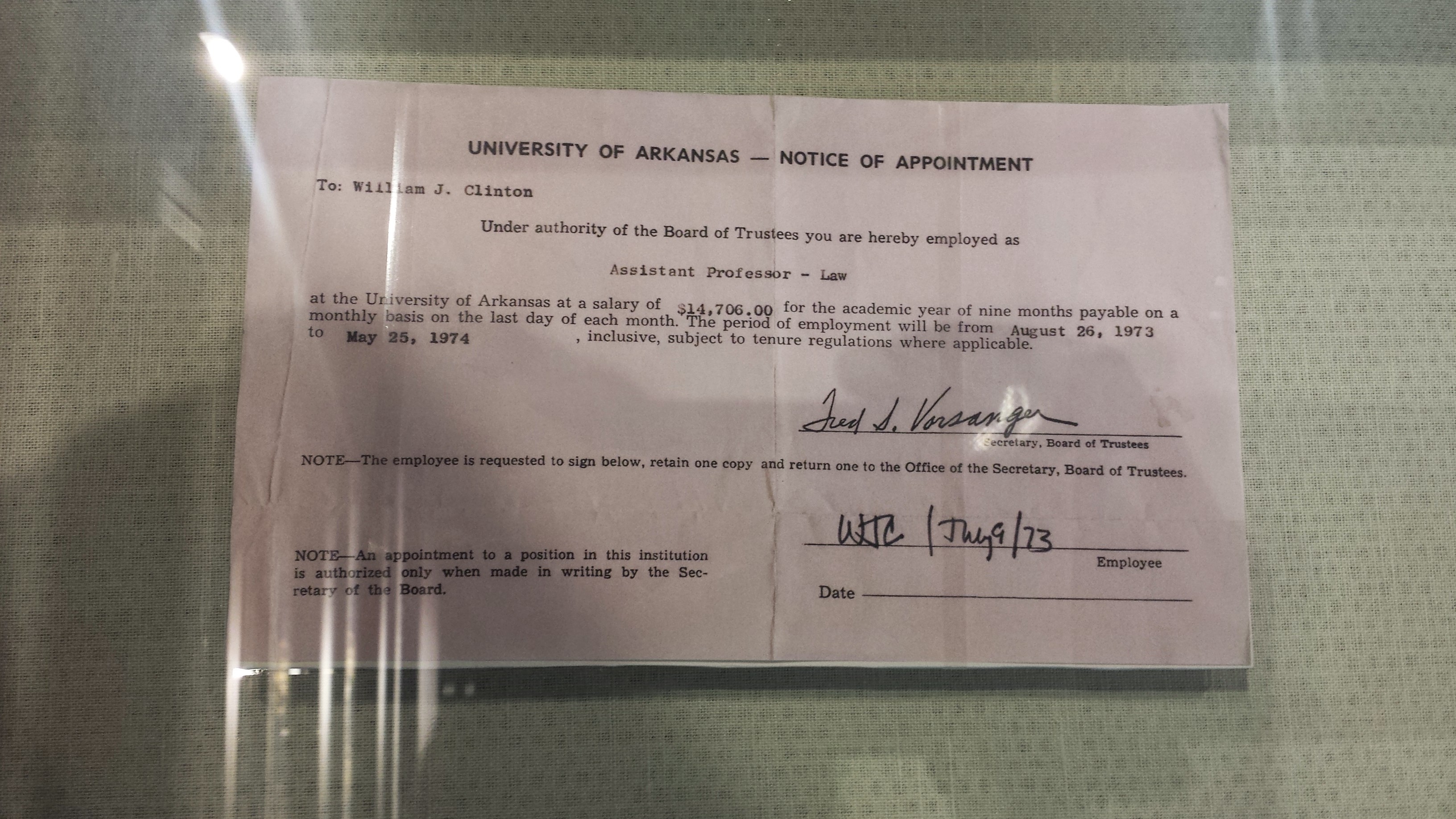
Here is Professor Clinton, teaching some class about (1) Individual ownership, (2) competition, (3), Profit, and (4) Production for Market Economy.
